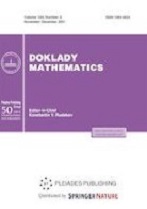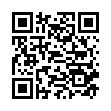|
MATHEMATICAL EDUCATION OF THE DIGITAL AGE
Mathematical elements of elementary education
M. A. Posicelskayaa, T. A. Rudchenkob, A. L. Semenovbcd
a Center for Development of Educational Environment, Moscow, Russia
b Axel Berg Institute of Cybernetics and Educational Computing, Federal Research Center "Computer Science and Control", Russian Academy of Sciences, Moscow, Russia
c Faculty of Mechanics and Mathematics, Lomonosov Moscow State University, Moscow, Russia
d Lobachevsky Institute of Mathematics and Mechanics, Kazan, Russia
Abstract:
In recent decades, several Russian schools have been implementing a world-unique education program of mathematics for elementary schools. In it, the landscape of school arithmetic is radically expanded due to the basic objects of modern mathematics and computer science. These objects and their operations are visual, making them much more comprehensible than traditional arithmetic. The range of activities also expands due to, for example, the introduction of strategies for enumeration, game winning, and algorithms (also operating in a visual environment). At the same time, the student’s position changes: they independently discover and build mathematics and constantly solve personally new, but feasible tasks that are “not-known-how-to-solve”. The student’s resources are saved by using a computer to perform routine arithmetic operations that have already been discovered and understood. The implementation of this approach is discussed in detail and is illustrated by examples of actual tasks that are representative of the program under consideration and the whole approach.
Keywords:
mathematical education, research training, elementary school, arithmetic, mathematical modeling in school, unexpected tasks, VUCA world.
Received: 21.01.2023
Revised: 16.02.2023
Accepted: 10.03.2023
Citation:
M. A. Posicelskaya, T. A. Rudchenko, A. L. Semenov, “Mathematical elements of elementary education”, Dokl. RAN. Math. Inf. Proc. Upr., 511 (2023), 21–53; Dokl. Math., 107:Suppl 1 (2023), S10–S41
Linking options:
https://www.mathnet.ru/eng/danma383 https://www.mathnet.ru/eng/danma/v511/p21
|


| Statistics & downloads: |
| Abstract page: | 80 | | References: | 18 |
|





 Contact us:
Contact us: Terms of Use
Terms of Use
 Registration to the website
Registration to the website Logotypes
Logotypes








 Citation in format
Citation in format 